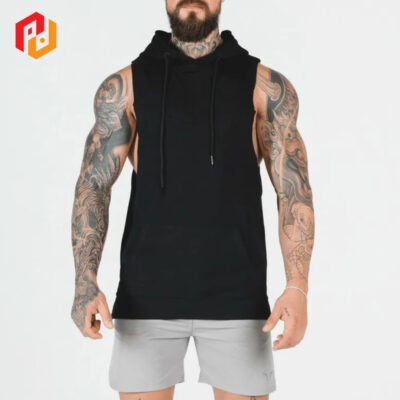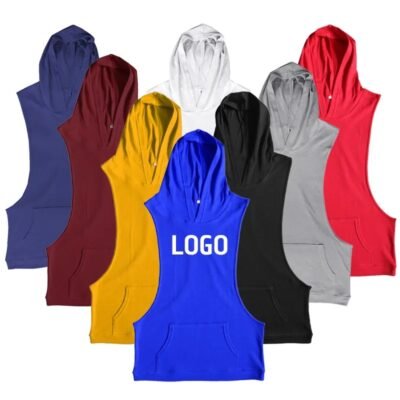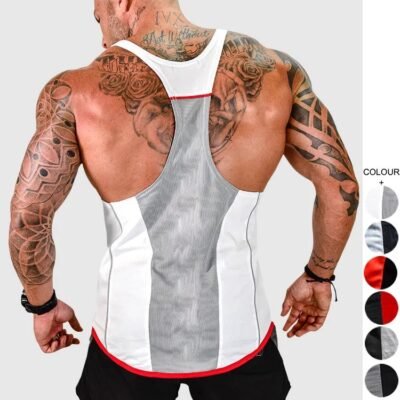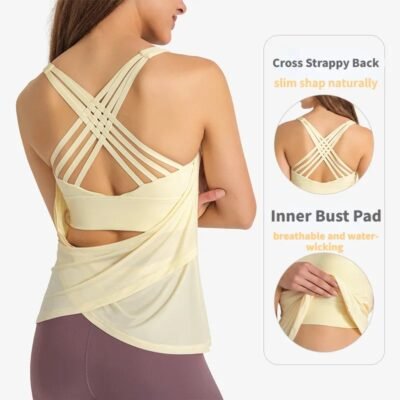Sport T-shirts generally use moisture-wicking, breathable fabrics to provide comfort and performance during physical activities. Common fabrics for sport T-shirts include:
| 1.Polyester | Lightweight, durable, moisture-wicking, suitable for high-intensity sports. |
| 2.Nylon | Abrasion-resistant, good elasticity, suitable for activities that require stretch and durability. |
| 3.Spandex/Elastane | Provides strong elasticity, enhances garment stretch, allowing for more freedom of movement. |
| 4.Cotton | Comfortable, breathable, but compared to synthetic fibers, it has slightly lower moisture-wicking properties. |
| 5.Blended fabrics | Some sport T-shirts use a combination of different fabrics to balance various performance aspects. |
1. Polyester is a synthetic fiber widely used in the manufacturing of sport T-shirts for several reasons:
Moisture-Wicking: Polyester exhibits excellent moisture-wicking properties, rapidly absorbing and transporting sweat to the garment’s surface, keeping the body relatively dry. This is crucial for athletes as maintaining dryness enhances comfort and reduces friction and discomfort.
Lightweight and Durable: Polyester is a lightweight and durable material suitable for various sports. It possesses high strength and durability, withstanding stretching and friction during physical activities without easily wearing out.
Quick-Drying: Polyester has the characteristic of quick drying, meaning it efficiently eliminates absorbed moisture, allowing the clothing to dry rapidly after exercise. This feature is beneficial for individuals engaged in multiple activities or outdoor pursuits.
Wrinkle Resistance: Polyester has good wrinkle resistance, maintaining the neat appearance of clothing. This ensures that sport T-shirts made from polyester maintain a favorable appearance even after wearing and washing.
Overall, polyester is chosen for sport T-shirts primarily because it meets athletes’ needs for moisture-wicking, lightweight durability, quick drying, and wrinkle resistance, providing a comfortable sports experience.
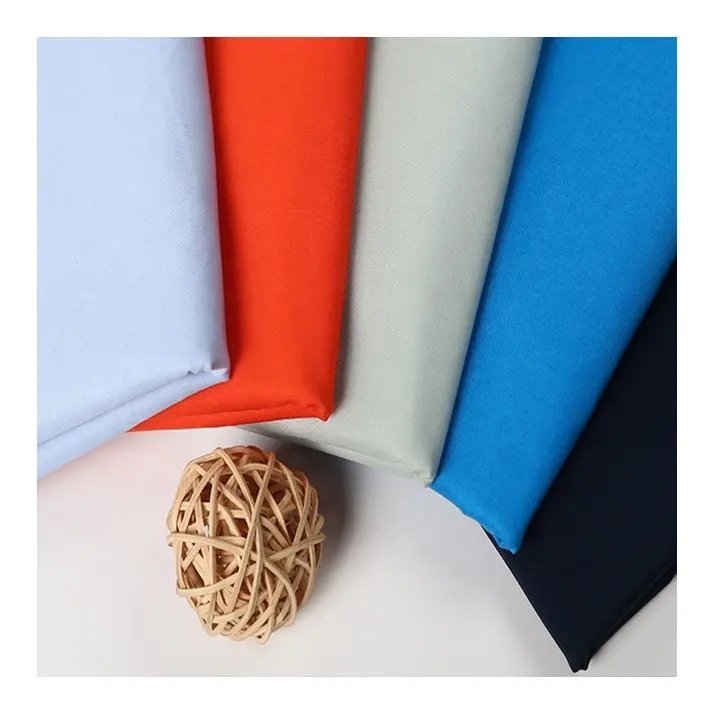
2. Nylon, as one of the fabrics used in sport T-shirt, is chosen for its unique advantages, including:
Abrasion Resistance: Nylon exhibits excellent abrasion resistance, capable of withstanding friction and stretching during high-intensity and vigorous sports activities.
Lightweight and Elasticity: Nylon is a lightweight and highly elastic synthetic fiber, allowing sport T-shirts to provide sufficient flexibility and comfort, suitable for activities that require freedom of movement.
Quick-Drying: Nylon has good quick-drying properties, efficiently removing moisture and allowing athletes to maintain dryness more rapidly after physical exertion.
Breathability: While nylon may be slightly less breathable compared to other synthetic fibers like polyester, it still provides a certain level of breathability, ensuring adequate air circulation during sports.
Wrinkle Resistance: Nylon has good wrinkle resistance, ensuring that sport T-shirts maintain a favorable appearance even after wearing and washing.
Choosing nylon as the fabric for sport T-shirt is often to meet specific sports requirements, such as the need for enhanced abrasion resistance and elasticity. It is particularly suitable for activities that involve resistance to friction and stretching, such as outdoor pursuits or high-intensity sports.

3. Spandex/Elastane is chosen as a fabric for sport T-shirts primarily due to its outstanding elasticity, stretchability, and excellent conformity to the body. Here are some reasons for selecting Spandex/Elastane as the fabric for sport T-shirts:
Elasticity: Spandex is an elastic fiber that provides exceptional stretchability. This allows sport T-shirts to follow the body’s movements without restriction, offering greater comfort and freedom of movement.
Body-Hugging Sensation: The stretchability of Spandex allows sport T-shirts to conform closely to the body’s curves, providing a better fit. This helps reduce friction and enhances comfort during physical activities.
Shape Retention: Spandex has excellent resilience, maintaining the shape of the clothing and preventing deformation or looseness caused by frequent wearing and movement.
Lightweight Comfort: Spandex is a lightweight material that doesn’t add extra weight to athletes. Additionally, it offers a soft touch, increasing the overall comfort of wearing.
Breathability: Spandex is often blended with other more breathable fabrics to ensure overall breathability of the sport T-shirt, preventing excessive moisture.
Durability: Spandex performs well in terms of combined elasticity and durability, making sport T-shirts more resistant to wear and tear.
Therefore, choosing Spandex as the fabric for sport T-shirts provides athletes with better elasticity, a snug fit, and enhanced comfort, making the clothing suitable for various sports activities.
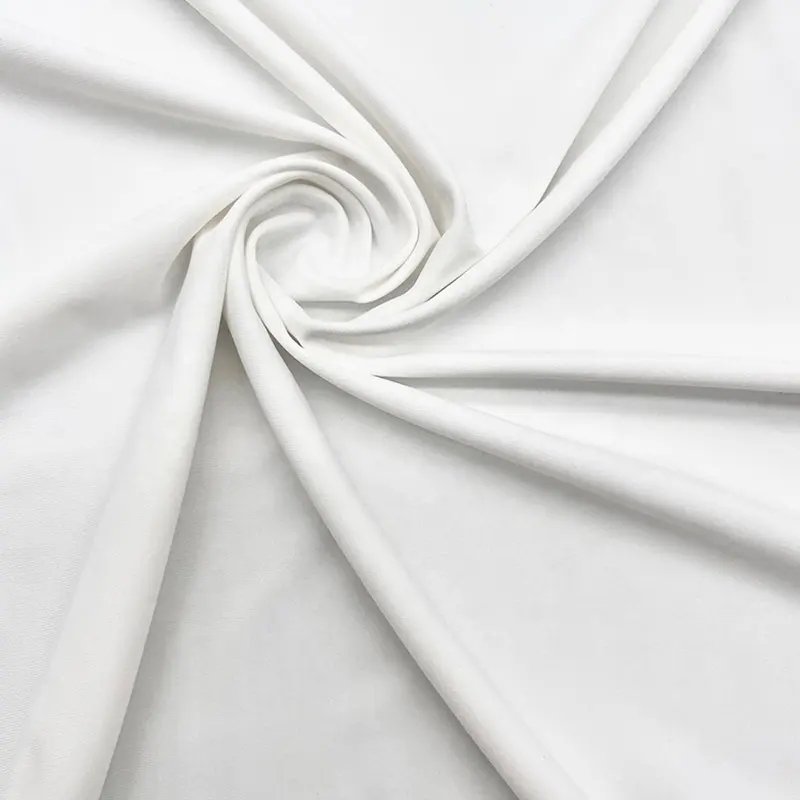
4. Cotton is not the preferred choice as a fabric for sport T-shirts, as it has some limitations compared to certain synthetic fibers. However, some sport T-shirts still use a blend with cotton for reasons that may include:
Comfort: Cotton is a natural fiber with a soft touch and skin-friendly properties. For low-intensity and casual sports, cotton fabrics may provide a more comfortable wearing experience.
Breathability: Cotton has good breathability, aiding air circulation and reducing the sensation of body moisture. This makes cotton-blend sport T-shirts popular in some relaxed sports scenarios.
Low Skin Sensitivity: Cotton has relatively low sensitivity to the skin, making it suitable for individuals who may experience allergies or discomfort with synthetic fibers.
Environmental Considerations: Cotton is a renewable and biodegradable natural fiber, making it environmentally friendly and appealing to consumers with eco-conscious preferences.
However, it’s important to note that cotton also has some drawbacks, such as relatively poor moisture-wicking abilities and slower drying compared to synthetic fibers. In high-intensity and heavily sweating sports, synthetic fibers are generally more popular as they effectively remove moisture, keeping the body dry.
Overall, the choice of cotton as a fabric for sport T-shirts often depends on individual preferences for comfort and environmental concerns, as well as the specific requirements of the sports activity.
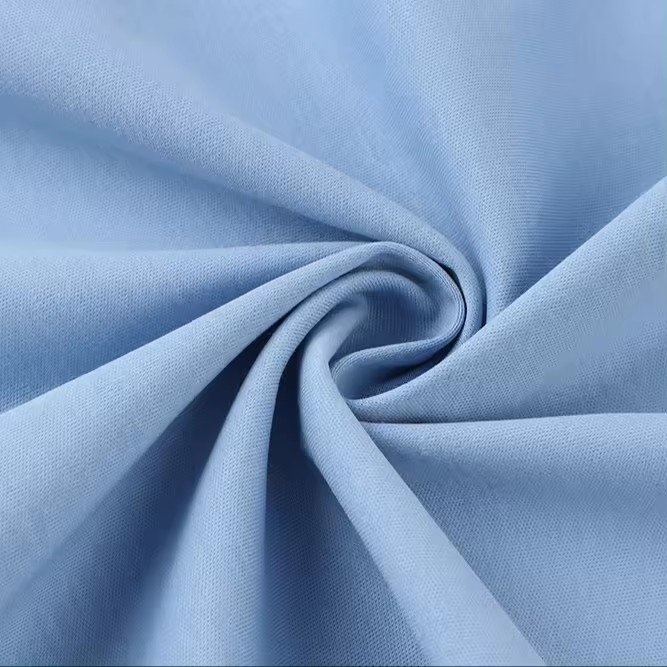
5. Choosing blended fabrics for sport T-shirts may involve combining the advantages of different fibers to provide a more comprehensive performance. Blended fabrics are typically composed of two or more types of fibers, and here are some reasons for selecting blended fabrics:
Comprehensive Performance: Blended fabrics can combine the strengths of different fibers, such as incorporating the moisture-wicking properties of polyester, the abrasion resistance of nylon, and the elasticity of spandex to offer more well-rounded performance, catering to the demands of various sports scenarios.
Comfort: Blending natural fibers like cotton with synthetic fibers can enhance moisture-wicking properties while maintaining a natural and comfortable feel, alleviating potential breathability concerns associated with some synthetic fibers.
Durability: Blended fabrics can increase durability while mitigating potential drawbacks of individual fibers. For example, blending cotton with polyester can reduce the irritability of polyester and enhance overall comfort.
Cost-Effectiveness: Blended fabrics are sometimes more cost-effective to produce, and compared to pure natural fibers, blends are generally more durable.
Environmental Considerations: In some cases, blending can be an environmentally friendly choice as it reduces overdependence on a particular fiber resource.
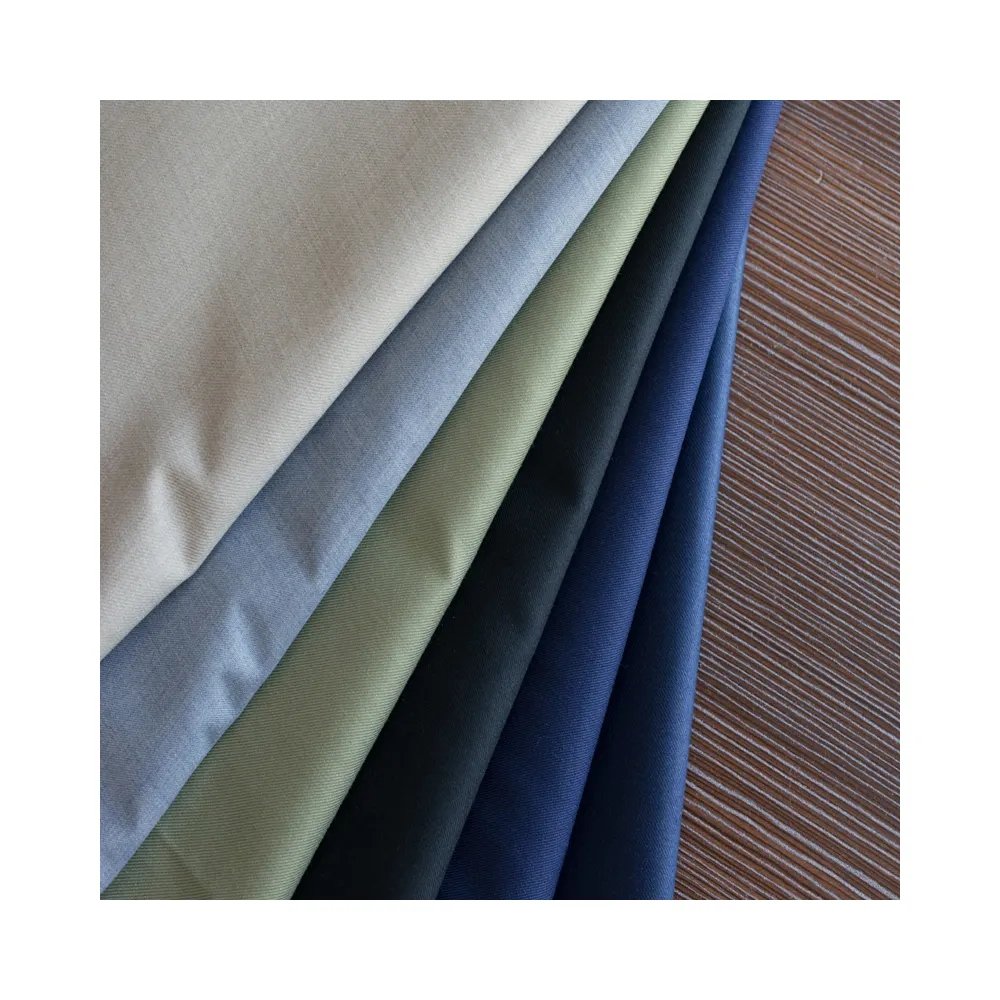
When choosing blended fabrics, designers often weigh the proportions of various fibers based on the intended use, desired comfort, and required performance of the sport T-shirt. Such blend designs aim to provide a more comprehensive and adaptable sports experience.
When choosing sport T-shirts, one can consider factors such as the type of exercise, personal preferences, and climatic conditions to select the appropriate fabric. For instance, high-intensity activities may require synthetic fibers with excellent moisture-wicking capabilities, while relaxed and casual exercises might be better suited for comfortable and breathable fabrics.



